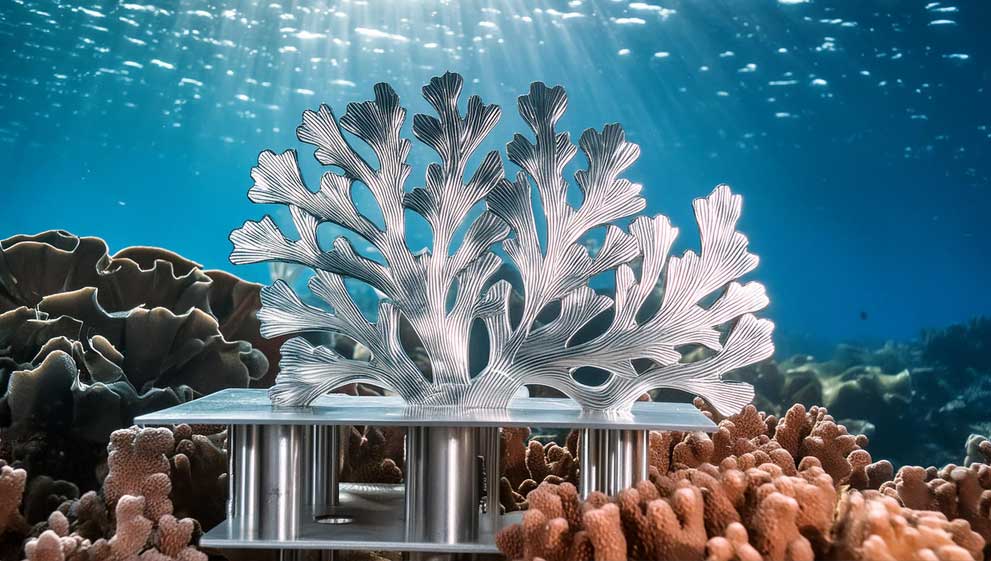Climate change, pollution and rising sea temperatures are having a devastating effect on the Worlds coral reefs. 2016 alone saw the bleaching and die off of around 30% of Australia’s Great Barrier Reef.
Such a catastrophe has a huge impact on the diverse range of fish and invertebrates living around and in amongst those coral structures.
New scientific research being conducted by the University of Delaware (UD) is therefore turning to developments in 3D-printing to create artificial coral structures as a potential solution.
The artificial corals have been made from stainless steel powder mixed with corn starch and polyester – commonly available and low cost materials. The 3D printed corals were installed alongside natural coral skeletons, and the research team studied the behaviour of both damsel fish and mustard hill coral larvae to determine if they showed a preference for one of the other structures. This behavioural analysis showed that the fish didn’t have a preference between the 3D-printed coral and the naturally occurring coral skeleton.
“Offering 3D-printed habitats is a way to provide reef organisms a structural starter kit that can become part of the landscape as fish and coral build their homes around the artificial coral,” Danielle Dixson (professor in UD’s College of Earth) said. “And since the materials we selected are biodegradable, the artificial coral would naturally degrade over time as the live coral overgrows it.”
The uses of Stainless Steel are so varied it is quite incredible and we’d like to think some of our Stainless Steel Laboratory sinks have helped in research products just like this one.
Ref: ZME Science
